Our Guide to the Best Fruits and Vegetables for Babies
Introducing healthy and nutritious foods into your baby’s diet is essential for their growth and development. Fruits and vegetables are ...
Read MoreImportant notice to customers — product packaging changesLearn More
NEW FOOD PACKAGING IN STORE NOW
From August 2018, customers will notice our rebranded food packaging start to appear on shelf in all major stockists.
 CURRENT Packaging
CURRENT Packaging

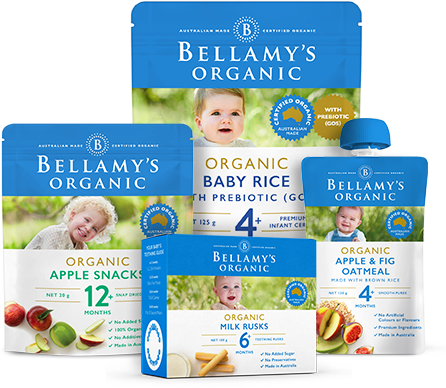 new Packaging
new Packaging
We are excited to announce our new packaging will start to appear on shelf from August 2018. This transition to new packaging will occur over a number of months. During this time there will be a mix of current and new packaging on shelf.
There are no major changes to these products, in some instances there is a small name change or slight recipe improvement, see below for the full details.
Products purchased via the website will be delivered to customers in our old packaging until the end of October. From November, products ordered from the website will be delivered in the new packaging.
Please note, our Infant Formula packaging will not be rebranded until later in 2019.
For any questions, connect with our team of accredited practising Dietitians on +61 3 6332 9200
Product name changes
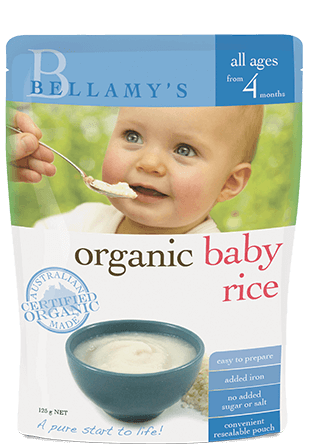 CURRENT Packaging
Organic Baby Rice
CURRENT Packaging
Organic Baby Rice

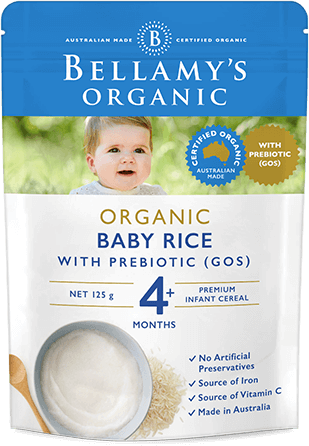 NEW Packaging
Organic Rice with Prebiotic (GOS)
Note: Our Baby Rice recipe has been upgraded to now include GOS Prebiotic
NEW Packaging
Organic Rice with Prebiotic (GOS)
Note: Our Baby Rice recipe has been upgraded to now include GOS Prebiotic
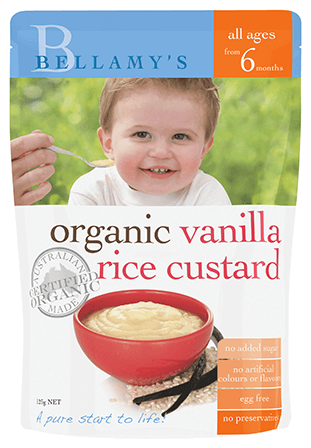 CURRENT Packaging
Organic Vanilla Rice Custard
CURRENT Packaging
Organic Vanilla Rice Custard

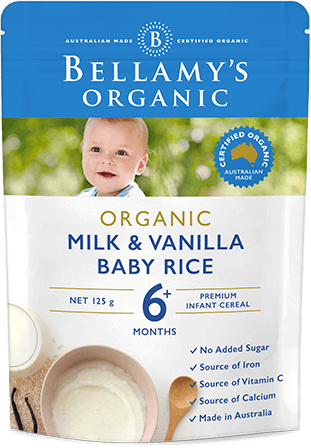 NEW Packaging
Organic Milk & Vanilla Baby Rice
NEW Packaging
Organic Milk & Vanilla Baby Rice
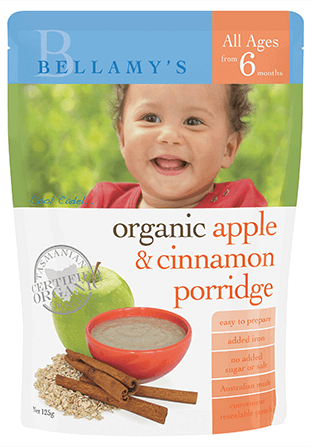 CURRENT Packaging
Organic Apple & Cinnamon Porridge
CURRENT Packaging
Organic Apple & Cinnamon Porridge

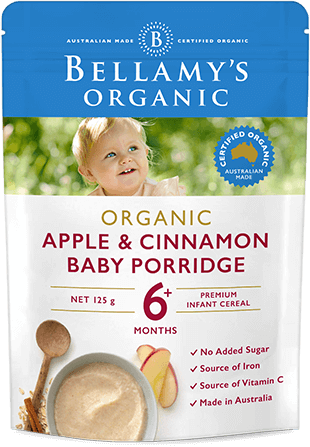 NEW Packaging
Organic Apple & Cinnamon Baby Porridge
NEW Packaging
Organic Apple & Cinnamon Baby Porridge
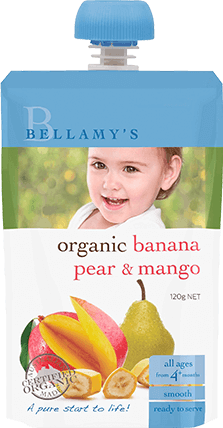 CURRENT Packaging
Organic Banana, Pear & Mango
CURRENT Packaging
Organic Banana, Pear & Mango

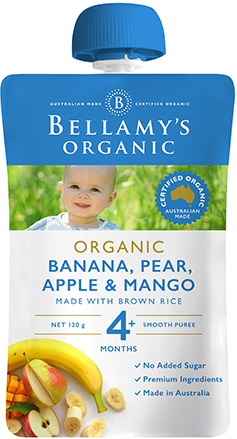 New Packaging
Organic Banana, Pear, Apple & Mango
New Packaging
Organic Banana, Pear, Apple & Mango
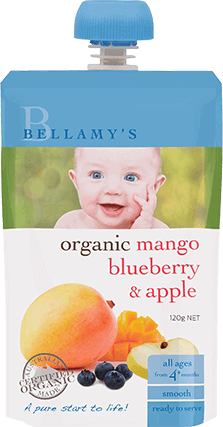 CURRENT Packaging
Organic Mango, Blueberry & Apple
CURRENT Packaging
Organic Mango, Blueberry & Apple

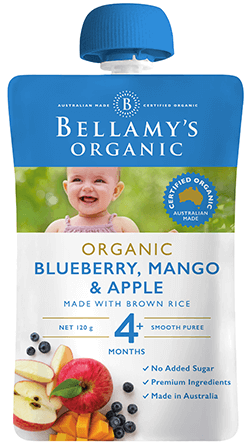 New Packaging
Organic Blueberry, Mango & Apple
New Packaging
Organic Blueberry, Mango & Apple
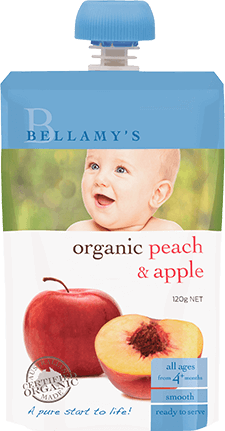 CURRENT Packaging
Organic Peach & Apple
CURRENT Packaging
Organic Peach & Apple

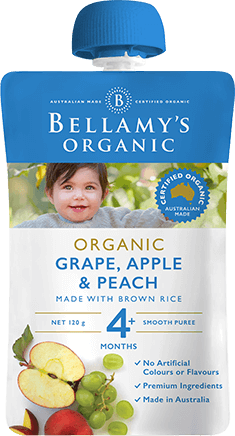 New Packaging
Organic Grape, Apple & Peach
New Packaging
Organic Grape, Apple & Peach
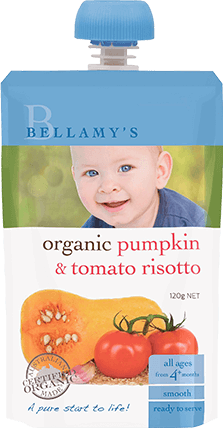 CURRENT Packaging
Organic Pumpkin & Tomato Risotto
CURRENT Packaging
Organic Pumpkin & Tomato Risotto

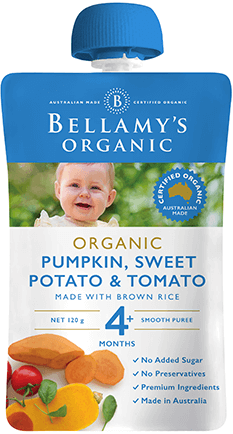 New Packaging
Organic Pumpkin, Sweet Potato & Tomato
New Packaging
Organic Pumpkin, Sweet Potato & Tomato
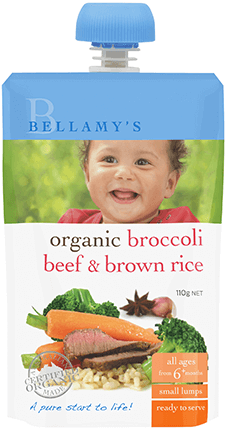 CURRENT Packaging
Organic Broccoli, Beef & Brown Rice
CURRENT Packaging
Organic Broccoli, Beef & Brown Rice

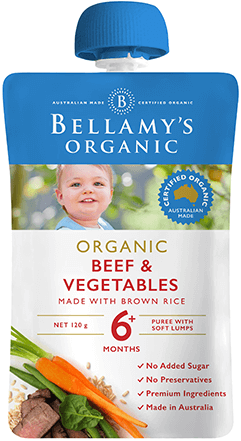 New Packaging
Organic Beef & Vegetables
New Packaging
Organic Beef & Vegetables
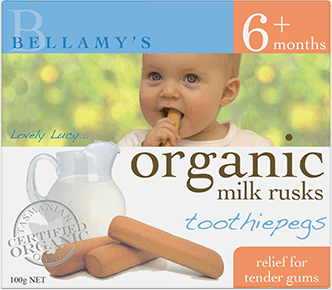 CURRENT Packaging
Organic Milk Rusks Toothiepegs
CURRENT Packaging
Organic Milk Rusks Toothiepegs

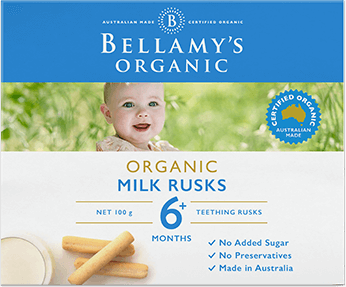 New Packaging
Organic Milk Rusks
New Packaging
Organic Milk Rusks

Storing your baby’s food correctly is important to ensure that it is safe for them to eat. If it is baby food you’ve purchased, the most important rule is to follow the instructions on the packaging. Generally, baby food that doesn’t need to be refrigerated should be stored in a cool and dry place – and always sealed air tight. Baby food that needs to go in the refrigerator should be kept in the back where it’s cooler – as opposed to on the door, where temperatures fluctuate more.
Here are a few other baby food storage solutions:
If you express breastmilk to save for future feeds, it’s very important that you store it correctly. You don’t want to lose the results of so much hard work because it goes bad or gets contaminated! So make sure you follow these guidelines:
It is essential that your baby formula stays sealed and dry during storage. Generally, storing in the pantry with the lid shut tight is sufficient. Follow instructions on the can, but most cans of powdered formula should be used within a month of opening.
It is always best to prepare formula immediately before you feed your baby. Yet of course there are times when this is very difficult. If you need to make formula ahead of time to use throughout the day, store it in the refrigerator if possible. After 24 hours, always throw out unused formula. If you need formula for while you’re out with your baby for the day, there are two options:
1. Put the correct amount of formula for one feed into a sterilised bottle and sufficient cooled boiled water into another bottle. Cool the boiled water in the fridge and keep cold throughout the day, in a cooler if necessary. Then when your baby is ready to feed, combine the two.
2. If it’s necessary to prepare the formula before you leave, make sure it stays cool throughout the day. If possible, transfer the formula to a fridge whenever it’s available. Otherwise, use a cooler with ice packs to keep the formula cold.
It is fine for your baby to drink the formula cold, but often they will prefer if it’s warmed. You can do this by simply putting it in warm water. We don’t recommend microwaving formula, however if you need to do so always shake the bottle to make sure there are no hot spots and the formula is well mixed. Test the formula temperature on your wrist and make sure it is at a safe temperature before you feed your baby.
When do you find it most difficult to have food for your baby ready?
Important Notice
Thanks for reading our blog. We hope you found this information interesting.
• The World Health Organisation recommends that breastfeeding is best for your baby.
• Having a balanced diet when breastfeeding is also important. Baby formulas should only be used after you’ve sought advice from a doctor or health practitioner.
• A decision not to breastfeed can be difficult to reverse and introducing partial bottle feeding will reduce the supply of breast milk. It is also wise to consider the cost of infant formula.
• If you use infant formula, all preparation and feeding instructions must be followed as per the manufacturer’s instructions. This is important for your baby’s health.